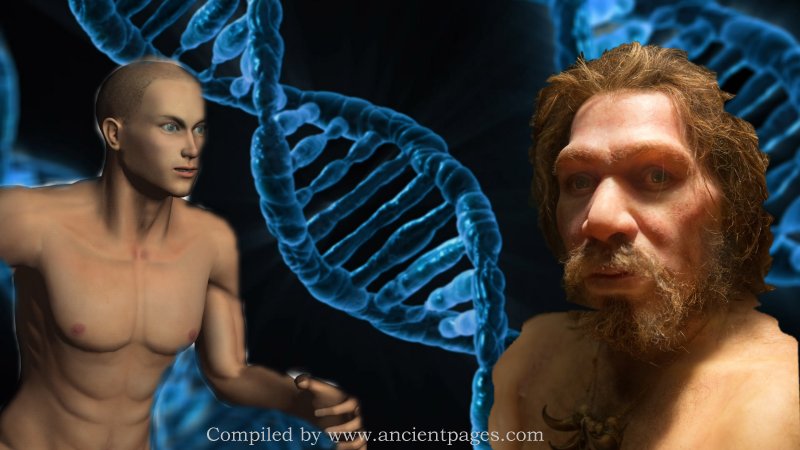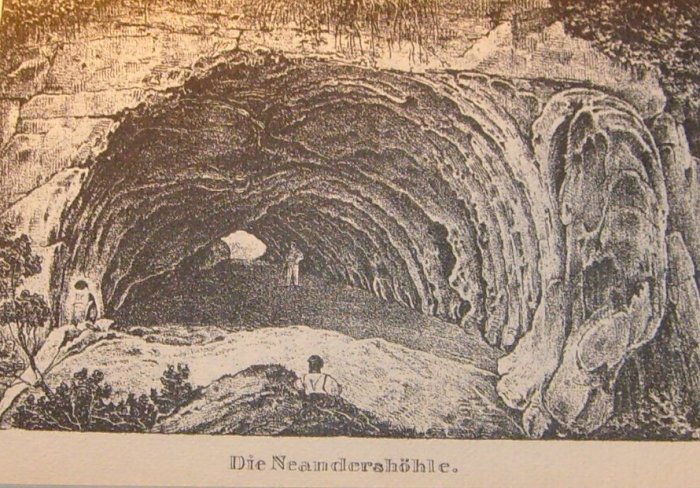Jan Bartek – AncientPages.com – It is not the first time scientists say modern humans and Neanderthals are closely related. Only this time, scientists have determined how much of our DNA is unique to us. It turns out it is a small fraction really, just 7% of our DNA is unique to modern humans!
According to this new study published by Science Advances, humans are not much different from Neanderthals.

It is also known that many humans carry genes from Neanderthals, a legacy of past admixture.
“Existing methods detect this archaic hominin ancestry within human genomes using patterns of linkage disequilibrium or direct comparison to Neanderthal genomes. Each of these methods is limited in sensitivity and scalability. We describe a new ancestral recombination graph inference algorithm that scales to large genome-wide datasets and demonstrate its accuracy on real and simulated data. “
“We then generate a genome-wide ancestral recombination graph including human and archaic hominin genomes. From this, we generate a map within human genomes of archaic ancestry and of genomic regions not shared with archaic hominins either by admixture or incomplete lineage sorting. We find that only 1.5 to 7% of the modern human genome is uniquely human. We also find evidence of multiple bursts of adaptive changes specific to modern humans within the past 600,000 years involving genes related to brain development and function…” researchers wrote in their paper.
Much of the current genetic variation within humans predates the split, estimated at 520 to 630 thousand years (ka) ago, between the populations that would become modern humans and Neanderthals.

Neanderthal cave, illustration from 1835. The appearance of the valley today is altered due to lime quarrying. Source
The shared genetic variation present in our common ancestral population is still largely present among humans today and was present in Neanderthals up until the time of their extinction.
This phenomenon, which is known as incomplete lineage sorting (ILS), means that any particular human will share many alleles with a Neanderthal that are not shared with some other humans. Therefore, humans often share genetic variation with Neanderthals not by admixture but rather by shared inheritance from a population ancestral to us both.”
The results of this study were based on DNA extraction from fossil remains of now-extinct Neanderthals and Denisovans dating back to around 40,000 or 50,000 years ago, as well as from 279 modern people from around the world.
Until now it has been a scientific challenge to identify the genes that are exclusive to modern humans. However, researchers have “developed a valuable tool that takes account of missing data in the ancient genomes,” said John Hawks, a paleoanthropologist at the University of Wisconsin, Madison, who was not involved in the research.
Having only 7% unique DNA does not sound like much. “That’s a pretty small percentage,” Nathan Schaefer, a University of California scholar and co-author of the report, told The ᴀssociated Press.
“This kind of finding is why scientists are turning away from thinking that we humans are so vastly different from Neanderthals.”
The extinct Neanderthals and Denisovans, two pre-human species that died off 35,000 and 50,000 years ago, respectively interbred with modern humans which explains why we have some of their DNA.
According to a previous study, interbreeding with modern humans wiped out Neanderthals’ Y chromosomes 100,000 years ago.
Neanderthals and modern humans met and interbred sometime between 370,000 and 100,000 years ago. This meeting was significant to the history of modern humans.
These new findings may eventually provide us with answers how pre-human species and modern humans may have mixed.
Speaking to Inverse, Nathan Schaefer, a bioinformatician at the University of California, San Francisco, and the paper’s lead author said, “If you sequence a bunch of people, you could make a tree that would show how everyone’s related, on average, across the whole genome.”
It was discovered that between 1.5% and 7% of the modern human genome is unique to our species. “In other words, at least 93 percent of the modern human genome is shared between our species and the two other ancient hominins,” explains Inverse.
See also: More Archaeology News
This study also shows humans are not as unique as previously thought, but the results can also tell us what makes us unique by examining DNA that can only be found in humans. “Maybe we’ve gotten a first glimpse at what to look at next for what might make humans special,” Schaefer says.
It would seem our species is still very young on this planet.
Written by Jan Bartek – AncientPages.com Staff Writer





